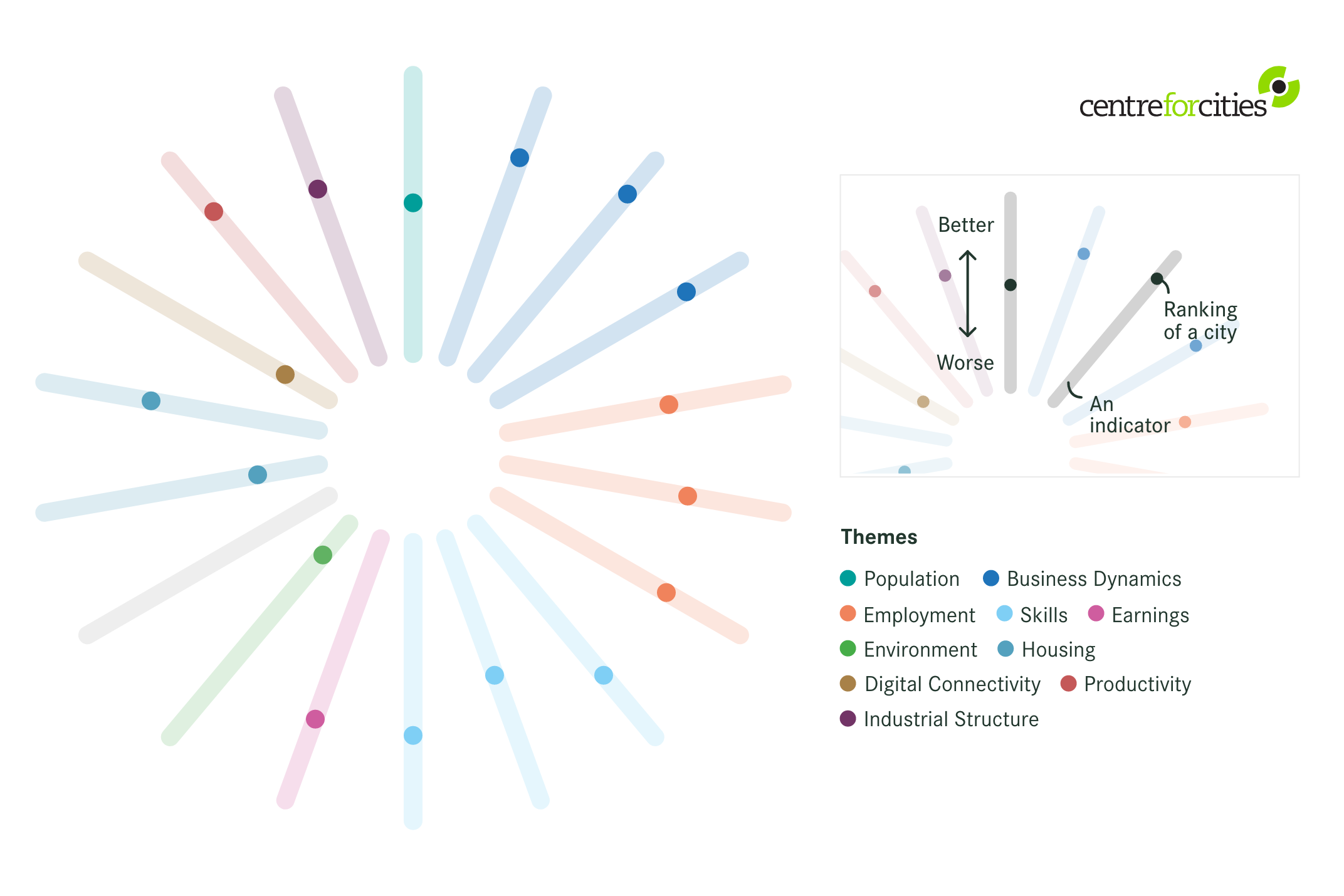Graphicacy accepted the challenge and delivered a do-it-yourself data visualization powered entirely by a familiar database system: Google Sheets, as described in our team’s Medium post.
Solution:
Graphicacy developed the City Monitor’s data explorer using information design best practices along with open-source data storage and front-end engineering solutions. This allowed users to easily explore and compare the latest economic data on the UK’s 63 largest cities and towns.
- Open Source Solutions: Graphicacy recognized an opportunity to apply an open-sourced frontend engineering method: custom visualization that links to a database built on Google Sheets. This setup operates much like Content Management System and enables practically anyone in the organization to update the data – and thus the visualization – with little technical competency required.
- Design Solutions Worthy of the Data’s Mission: After presenting a few creative directions, the team chose a spider-style design that showed each city’s performance across 18 economic indicators, including population, employment, earning, environment, housing, digital connectivity, and COVID-19 impact.
- Built for Simplicity: Graphicacy’s visualization tool gives the Centre access to a cloud database so staff can focus on telling impactful stories with their data – rather than the tasks of storing and managing it – through integration with Google Sheets.
Adding to the advantages of a more intuitive database, Graphicacy’s design changed the way the Centre and its audience viewed the data. According to the Centre’s team, the new design inspired much more engagement than previous iterations.





